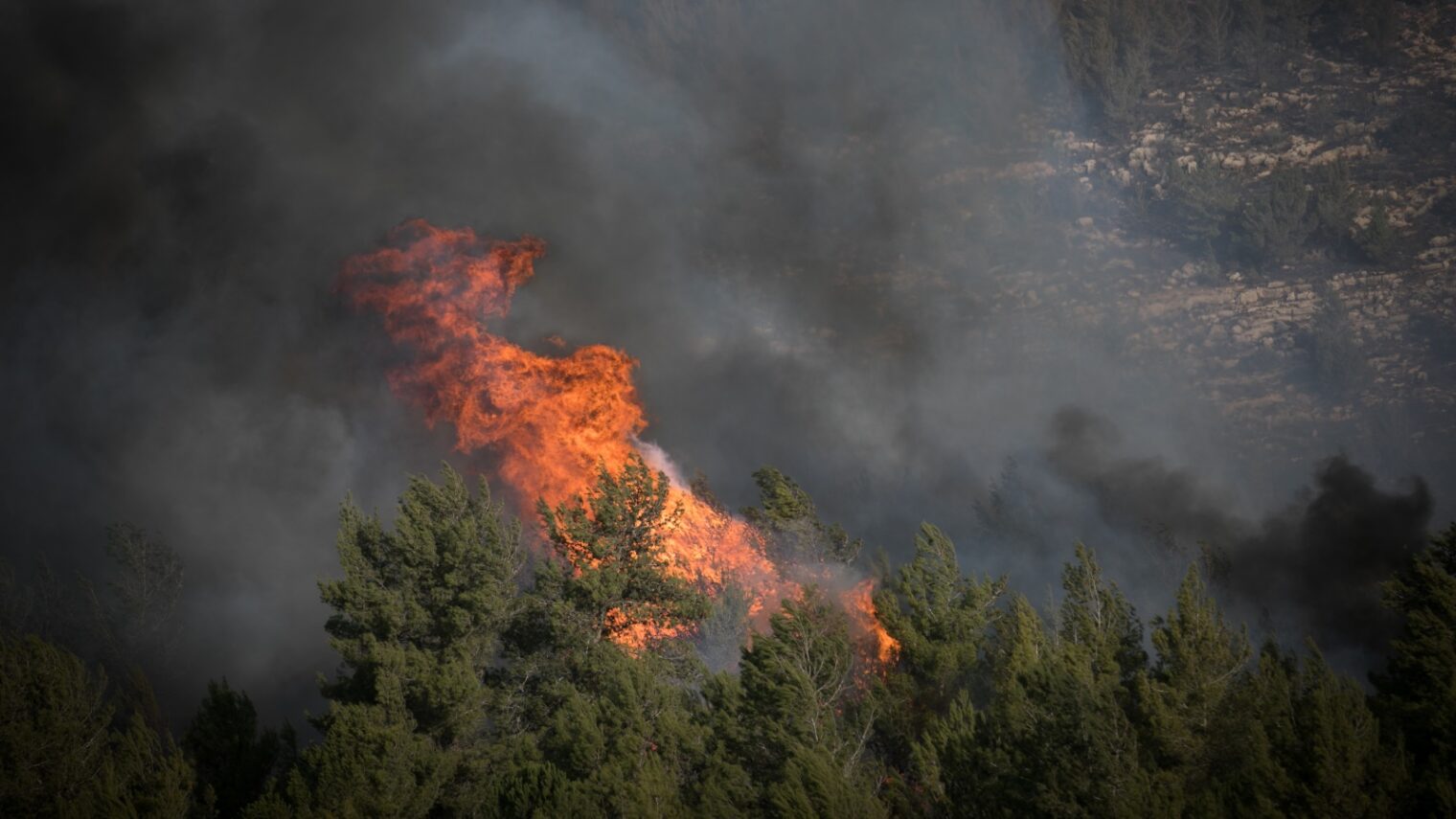Aggressive wildfires are rampaging through many countries this summer, bringing death and destruction in their wake. In California alone, firefighters are scrambling to control 18 separate blazes.
Texas, Oregon, Florida, New Jersey, as well as Canada, Greece, India, Mexico, Portugal, Spain, Sweden and the UK are among other areas battling massive forest fires, a phenomenon experts expect will only increase due to climate change.
It was the massive forest fires in Israel over the past several years that gave electro-optics physicist Daniel Leigh the idea of using algorithm-controlled laser beams from helicopters or trucks to zap leaves, thin branches and pine needles off treetops in the path of fire. The flames are forced downward, where they can be more easily controlled by conventional methods.
Leigh explains that leafy treetops provide a highly combustible smorgasbord for hungry forest fires. Fanned by extreme wind and weather conditions, a forest fire that rises to the treetops spreads out of control in the blink of an eye.
When Leigh shared his idea with ecologist Zvika Avni, former chief of the Keren Kayemeth LeIsrael-Jewish National Fund (KKL-JNF) Forestry Department, Avni agreed to be the ecology and the wildfire fighting specialist for Leigh’s startup, Fighting Treetop Fire (FTF).
Founded in 2012 and bootstrapped by Leigh, FTF developed its laser technology in consultation with Hebrew University academics and with professionals. Several years later, management consultant Noach Cholev joined as a cofounder.
The company of four is now in the engineering, modeling and testing phase. It’s not yet clear when the technology will reach the market. This depends on finding a strategic partner.
Laser (which stands for “light amplification by stimulated emission of radiation”) uses concentrated light to cut or perforate anything from metal to human tissue.
One might think this heat would just make a fire worse, but Leigh explains that the laser works lightning fast and then switches off. The moisture remaining in the foliage immediately extinguishes the combustion. In preliminary lab experiments, FTF’s laser technology sheared off targeted pine needles without igniting them or the remaining pine needles.
Moreover, the fallen foliage – while still flammable — forms a compact high-moisture bed with restricted airflow. With less oxygen and densely packed fuel, the ground fire loses intensity and speed, and is easier to extinguish.
“We now aim at large-scale experiments and later on prototype development so that we can do outdoor real-life proof of concept testing,” Leigh says. “We are now seeking partnerships, licensing agreements and/or investments. The firefighting community is all excited to try it out but they need a demo tool to work with.”
The technology at the heart of FTF is patented in Israel, Australia and Europe; a US patent is pending. There is already interest in the technology from Australia, which suffers devastating wildfires every summer.
Safe zone
Leigh isn’t a firefighter, but he couldn’t bear to sit back and watch forest fires wreak destruction.
“My background in electro-optics brought me to ask what I could do,” says Leigh. Learning that canopy leaves are igniters and can regrow after being cut, he immediately thought of laser.
“While it’s not possible to cut down whole trees with a laser, I analyzed the process and realized I could use laser beams, sent from a safe distance, like a knife to cut off leaves remotely,” Leigh says.
He envisions FTF as a unique rescue tool to create a safe zone or an escape route for trapped firefighters or residents.
The same algorithm-controlled laser technology – which can work continuously in all weather conditions with no need to refill anything — theoretically could be used for cutting back lower-to-the-ground foliage in the path of fire, and could prove a valuable firefighting tool for sensitive worksites such as power companies and utilities.
Triangle of fire
Rami Zaretski, head of KKL-JNF Forest Fire Department, confirms that treetops’ combustible materials and halo of oxygen feed forest fires, often causing firestorms whipped by air currents created by the high-energy blaze itself, as well as firebrands — sources of heat that can create spot fires.
“This is the basic triangle of fire: heat, oxygen and combustion material,” Zaretski tells ISRAEL21c. “When we remove one of the components from this equation, or change the ratio, the burning will stop.”
He therefore likes the FTF concept but raised some questions about the approach on a practical level. For example, can it work fast and efficiently enough to prevent firebrands?
Leigh and Avni believe it will, thanks to the algorithmic control process. And the technology can enhance the capability of existing methods to isolate and control spot fires, they add.
How would the proposed process affect wildlife?
“Treetop fires are extremely hot and therefore kill all the animals in their vicinity,” Avni says. “The FTF tool will affect or injure some animals in the process. However, this will amount to a small fraction of the number of animals killed not using the FTF tools.”
In answer to Zaretski’s concern about the helicopter delivery method’s ability to function in high-smoke conditions and extreme wind, Leigh explains that measures would be taken to protect the engine from smoke, and the aircraft would maintain a safe distance from the fire front. The laser beams would be guided through the smoke by special imaging systems.
“FTF’s new ‘out of the box’ method and tool is designed exactly for such extreme weather conditions that lead to fires uncontrollable with today’s wildfire fighting tools using chemicals and water for fire suppression,” says Leigh.
For more information, click here.














